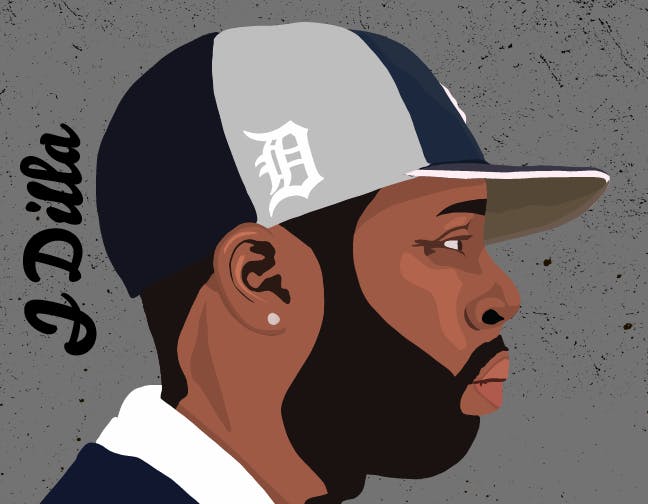Every year around October, I try to capitalize on my favorite season by immersing myself in as many fall-related things as possible.
My month isn’t complete until I’ve crossed off my mental checklist: Visit a cider mill or corn maze, watch low budget horror films, enjoy the changing leaves and cozy, chilly weather, attend at least one Halloween-themed event of any kind, etc. — anything to immerse myself in the spirit of fall.
This year, some of the music of legendary musician and Detroit native J Dilla has helped me feel the fall vibe, and I think this is the latest in a mountain of reasons that makes him worth checking out.
Born James Dewitt Yancey, but better known as Jay Dee or J Dilla, is considered by many to be one of the greatest and most influential producers in the hip-hop genre. As a prolific record producer and the founder of Detroit-based music group Slum Village, Dilla was unique. He primarily made his music using an AKAI MPC and had a visionary’s ear for samples.
Dilla’s music is characterized by such samples, groovy basslines and a lack of quantization. Understanding sampling and quantization are essential to understanding why J Dilla was so unique.
Sampling, which is essentially the act of repurposing a piece of a sound recording (or sample) to create something new through the use of a sampler (like J Dilla’s MPC), is used widely across music genres.
Dilla used sampling in a variety of ways, using drum hits to create a groove, looping parts of a song on repeat to serve as a melody, or cutting (chopping) them to create a new melody. The MPC, a popular sampler, consists mainly of 16 pads arranged in a grid that could be hit to play a selected sound. Dilla used these pads to create melodies from samples and to program drum patterns.
The way he cuts up the The Escort’s 1973 song “I Can’t Stand to See You Cry” for an instrumental titled “Don’t Cry” from one of his most famous albums, “Donuts,” is proof alone of his mastery over sampling. Yancey completely takes the song apart and uses the pieces to build something new.
Quantization snaps notes or inputs from an external device to a sort of grid, causing them to hit perfectly on beat. Dilla avoided this, giving his drum grooves a laid-back, swinging sound.
Even though Dilla used an electronic drum machine, drummer and musician Questlove called Dilla the world’s greatest drummer for the organic and human feeling that this method produced. His MPC was an instrument of its own.
Dilla’s nostalgic sound is also sometimes cited (along with Japanese producer Nujabes) as one of the major beginnings of the lo-fi hip hop sound.
Much of Dilla’s music evokes very specific feelings, and the tracks I’ve been listening to recently evoke feelings that I associate with fall. Instrumentals like “DFTF” perfectly encapsulate the thoughtful, nostalgic feeling of the season. Electric piano warbles like a light, gusty breeze, dusty drums shuffle like the scuffling and crackling of shoes on leaf-littered pavement.
The instrumental to the song “Colors of You” would be most at home in a coffee shop, under sounds of conversation, orders being called and the clink-and-clatter of spoons on cups on tables. “Sounds like Love” is a night in, a mug of hot cider. His more understated, smoother beats are the perfect companion to a season spent checking off a fall bucket list of your own.
While he died from cardiac arrest in 2006 at only 32 years old, countless others still find their own connections to Dilla. YouTube comment sections under reposts of Dilla’s music are filled with emotional, near-spiritual love for the man that he was, and the beautiful music that he produced. A description of one such video reads “REST IN PEACE JAY DEE WE MISS YOU!”
The instrumental is one of my personal favorites, “Flowers,” which features a looped piano sample, a typically dusty Dilla drum pattern and a vocal record scratch. The top comment shows just how much Dilla’s special brand of musicianship has reached the hearts of many thoughtful listeners. It reads, “Music like this is how you know there's more to life than just being alive.”
I encourage you to check out Yancey’s music yourself this spooky season — I only covered a few beats from his vast catalogue of instrumentals, without even mentioning the variety of artists that sang or rapped over these instrumentals. His ear for samples and talent for punching a drum pattern will complement your fall perfectly.
Support student media!
Please consider donating to The State News and help fund the future of journalism.
Discussion
Share and discuss “COLUMN: Why Detroit musician J Dilla should be on your playlist this fall” on social media.







